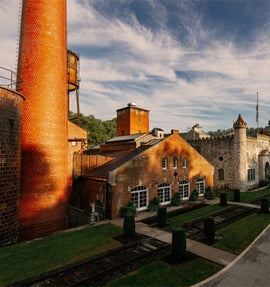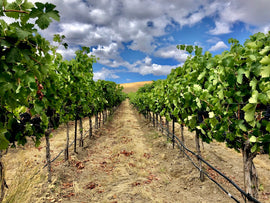What were you up to in 2013? Me? Well since you asked, I was living on Brooklyn’s loudest avenue (Flatbush), watching the construction site across the street from me assume its final form as The Barclay’s Center, wondering if it was time to move, not thinking about Champagne at all. What a difference a decade makes!
David Pehu, on the other hand, was embarking on the journey that would result in the very bottle you have in your hands this month. This is not surprising: David’s family – on both sides – has been making bubbly for four generations at least, stretching back to the Veuve Pehu label in the early 1900’s. His paternal grandfather put out bottles under the Antonin Pehu label. The Simonent name arrived, along with additional vineyards, courtesy of David’s mother, at which point (sometime in the 1970s) the Champagne house David has run solo since 1995, assumed its present, be-hyphenated form. It is centered in Verzenay, in Montagne de Reims, where the emphasis is on Pinot Noir, which accounts for 78% of the plantings. All told, Pehu-Simonet has 7.5 hectares of vines and produces about 40,000 bottles a year, all of them from Grand Cru (and one Premier Cru) sites. His wife has vines in Mesnil-sur-Oger in Cotes du Blancs as well, which allows them to produce Grand Cru Blancs de Blancs too.
You’d think such a pedigree would make things relatively easy, but apparently Dave and his dad engaged in a veritable “war of wills” over the direction of the family business, with Pehu fils emerging victorious to implement his vision, part of which entailed biodynamic conversion in the vineyards. But my guess is the fighting words here were “no malo”, because the most unusual aspect of David’s approach is his refusal to employ a practice called malolactic fermentation in any of his bottlings. (Briefly: this is the process, present in almost all red wines and common in fuller whites like Chardonnay and Viognier, by which tart malic acid converts to softer, creamier lactic acid. Nomenclature notwithstanding, it is technically not a fermentation at all, because the transformative agent isn’t yeast, but rather a specific bacteria known as Oenococcus oeni.) David’s approach is meant to preserve freshness and purity in his wines. He offsets the acidic sharpness that remains with extended aging and lees contact.
It’s a labor-intensive, time-consuming effort that results in complex, idiosyncratic Champagne that David admits is not necessarily aimed at the novice drinker. I wasn’t aware of any of this when I tried the 2013 Fins Lieux #7 at a Champagne seminar this fall; all I knew was that it was the best sip of the day. The fruit and acid perfectly twinned after 10 years of cohabitation, threading upward through the palate to a seamless, high toned conclusion. It is also apparently something of an outlier even amongst the Pehu-Simonet selections; a Blanc de Blancs from Villers-Marmery, the only Premier Cru site David farms (though he avers that it is clearly Grand Cru quality.) Known as an “island of Chardonnay in a sea of Pinot Noir”, the village’s chalky and gravelly soils are perfect for producing firm, mineral driven Blanc de Blancs in the Montagne de Reims otherwise Pinot Noir-favoring terroir.
Anyway, I hope you enjoy this particular bubbly as much as I do, and find, in its decade long journey to you, occasion and inspiration for grateful and celebratory year’s end reflections. See you in 2024!
Cheers,
The PlumpJack Wine Team
|
Pehu-Simonet Fins Lieux #7 ‘Les Chouettes Villers-Marmery Extra Brut 2013 |
|
|
From: Villers-Marmery, Montagne de Reims, Champagne |
About the Winemaking: Vinification is either in tank or in barrel, depending on the particular wine. Pehu, who studied oenology in Burgundy, has been using barrels since 1988, and while most of his barrels are purchased second-hand from Burgundy, he’s experimenting more and more with local oak from Verzy, coopered by the Tonnellerie de Champagne in nearby Cauroy-les-Hermonville. Pehu strictly avoids the malolactic for all of his wines, including the red wines used for making rosé, as he believes that blocking the malo better preserves the finesse and expression of fruit in the long run. Assemblage/Vinification: 100% Chardonnay from the Les Chouettes vineyard in the village of Villers-Marmery at 150-200 meter slopes planted on chalky rich soils. The vins clairs for this bottling were raised in stainless steel and the wine was given nearly seven years aging sur latte prior to its disgorgement in February of 2021. Dosage: 3 grams/liter
Tasting Notes: “The 2013 Extra Brut Villers-Marmery Les Chouettes Fins Lieux #7 shows why Villers-Marmery is often highly regarded. Citrus peel, white flowers, chalk, white pepper and mint give the 2012 its brilliant, sculpted personality. There's plenty of energy and tension here. Bright acids punctuate the intensely, mineral, saline finish. The 2013 is gorgeous.” - Antonio Galloni, Vinous |
|
Winemaker: David Pehu |
|
|
Price per bottle / Price per case: $118.99/$1285.10 |
|
|
Suggested Food Pairing: Oysters, Lobster, Roast Chicken, Crab with butter sauce. |
|





